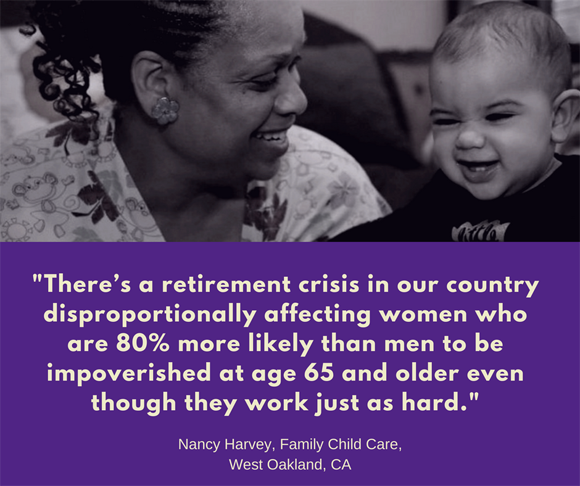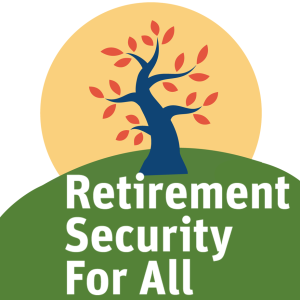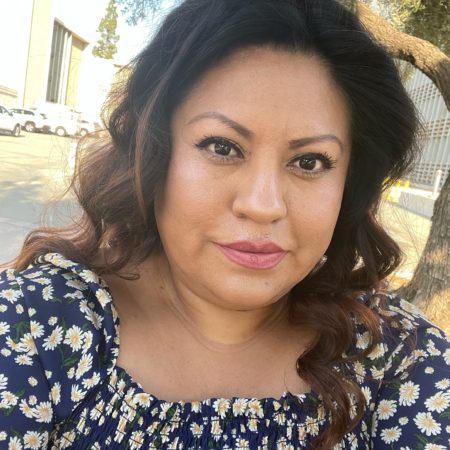We work on improving retirement security via endorsements of candidates that will protect our pensions, and through efforts to move Secure Choice forward in California for private-sector workers who don’t have any retirement plan, such as our child care providers.

 Thanks to SEIU members who wrote letters, recruited speakers at hearings, and shared our stories with legislators and the press, retirement security is becoming more of a reality for millions of California workers. The Secure Choice Savings Program promotes greater retirement savings for California’s private-sector workers who currently lack access to retirement savings plans at work.
Thanks to SEIU members who wrote letters, recruited speakers at hearings, and shared our stories with legislators and the press, retirement security is becoming more of a reality for millions of California workers. The Secure Choice Savings Program promotes greater retirement savings for California’s private-sector workers who currently lack access to retirement savings plans at work.
For employees who work for an employer who does NOT offer a 401(k) or pension, they can opt to make payroll contributions to this plan. Each employee’s contributions will be directed into Individual Retirement Accounts (IRAs) in his or her name and will remain with the worker as s/he changes jobs. Fees are capped at a low rate, funds are invested professionally, and enrollment and opt-out are simple.
Scroll down to read some common questions and answers, or download the FAQ here.
Congress just overturned a regulation that had made it easier for these plans to move forward. How will this affect California?
The Congressional action makes it more difficult for other states to create new programs. In California, the groups working on this program will continue to move forward. We do not expect to see any major impact on our work.
What else is left to do?
In April 2017 the Secure Choice Board hired a new full-time Executive Director. SEIU member leaders and other advocacy groups need to establish relationships with the new staff and share stories about workers suffering from a lack of retirement security. We will be attending board meetings, sharing stories, and holding Board members and staff accountable to make sure the program that is developed provides the lowest risk and greatest return for eligible employees.
How much will an employee contribute to the Secure Choice Program?
If no action is taken by the employee or the Board, 3% of the employee’s annual salary or wages will be contributed to their account. The Board is authorized to adjust the initial contribution rate to no less than 2% and no more than 5%, and to subsequently implement 1% automatic increases up to 8%. The employee is always free to change or stop their contributions.
Who is responsible for the administration and investment of Secure Choice?
The Secure Choice Investment Board is made up of 9 trustees who administer and invest the Trust, establish guiding principles and restrictions for investment of Trust assets.
The Board members include:
- State Treasurer (Chair)
- State Controller
- Director of Finance
- Expert appointed by the Senate Rules Committee
- Expert appointed by the Speaker of the Assembly (Currently an SEIU leader)
- Four additional experts appointed by the Governor
The Board will contract with a public retirement system and/or private financial service providers to manage the dayto-day investments, with the law requiring them to act as “fiduciaries” — i.e. to act in the best interest of participating employees.
When will people be able to start signing up?
The Secure Choice Board is setting up the program now. Once the state passes a budget to provide a loan to the program, the Board will begin hiring staff and consultants to develop the program. Over the next year, the Board will meet monthly and hear from experts and the public to help create the program. Most likely in 2019, the Board will begin enrolling all eligible employers and employees along the following schedule:
- Within 12 months after the board opens enrollment, employees of employers with more than 100 eligible employees;
- Within 24 months after the board opens enrollment, employees at employers with 51-99 eligible employees;
- Within 36 months after the board opens enrollment, all other eligible employees, including at employers of 5 or more eligible employees;



